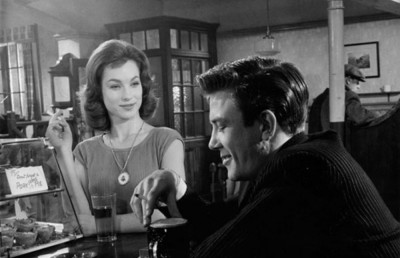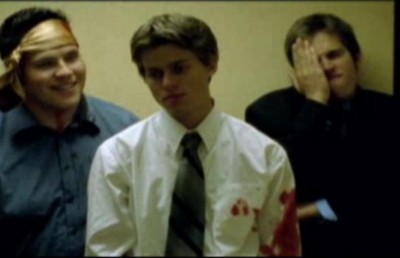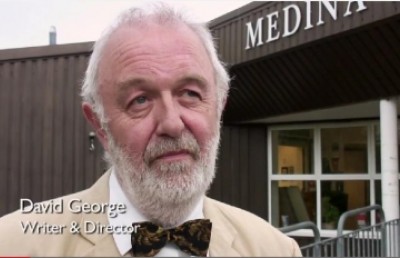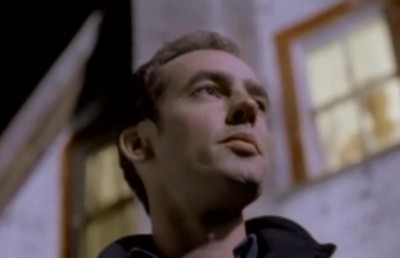Walking with the Dead: An Interview with Marc Price
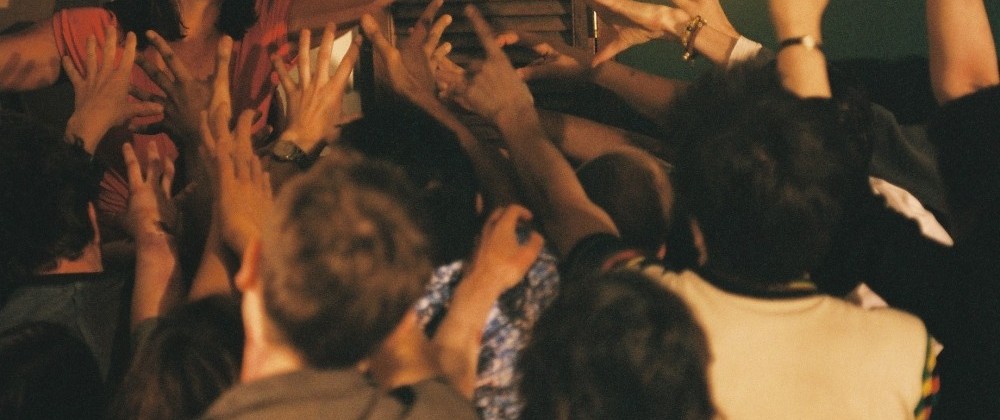
Marc Price’s debut film, Colin, is unique in that it is a zombie film told from the perspective of the titular zombie: whilst fighting a zombie in his home, Colin (Alastair Kirton) is bitten and soon dies. Returning from the dead, he stumbles through the empty streets, encountering other zombies, terrified survivors, and his sister. As his life as one of the living dead unfolds, the life of the living Colin is slowly revealed as are the horrific and barbaric acts of the survivors, culminating in a film which quietly meditates on the violent potential of humanity whilst subtly exploring the emotional impact of death and loss. This is not to suggest that Colin is a film devoid of the prerequisite zombie imagery – for it does indeed feature hordes of the undead, singular cadavers shambling down empty streets, and plenty of flesh eating – but more that it competently grafts such imagery onto its emotional core without detracting from it.
Much of the publicity surrounding Colin has placed great emphasis on the film’s budget: forty-five pounds Sterling. Price’s intention was to make the film for absolutely nothing but the zero budget increased when he purchased tea and biscuits for the zombie extras as well as jars of golden syrup, red food colouring, a crowbar and a pack of mini-DV tapes. Whilst this is clearly a viable hook on which a promotional campaign can be constructed, it also brings to the fore the increasing availability of low-budget filmmaking to the masses. As Price has proven, with an idea, a script and ingenuity a film of quality can be made using the most basic of readily available equipment: Price shot on a five year old Panasonic mini-DV camera which broke during the eighteen month shoot. This was replaced by a ten year old mini-DV with the subsequent footage edited on an old PC with out of date software. To compound all of this, Price wrote and edited the film whilst working the night-shift at a courier company.
.jpg)
Alistair Kirton as Colin
The following interview took place on 10th September 2009 and, please note, that it does contain spoilers.
Offscreen: When did your interest in filmmaking begin?
It’s a difficult one to sort of pin down. I think the big thing that happened was that when I was younger I watched movies like Superman 2 and the Star Wars movies – and this is just me speculating – my dad took me to the cinema to see… I can’t remember! I kind of like that I don’t know! I don’t know whether Superman 3 or Return of the Jedi came out first? I went to see one of those movies in the cinema and there was something about seeing characters that I was familiar with on a gigantic screen with loads of people reacting to what was happening. I think maybe something kind of got me there so film was obviously the exciting medium for me. I was raised up on blockbuster and genre films specifically so it started off as entertainment but then as I got older I started to discover other films as well. I didn’t turn my back on genre; I think genre is a really important type of film with an awful lot to offer.
Offscreen: Did any of these films influence you when you were writing and directing Colin or was it zombie cinema in more general that influenced you?
In a way I think they are all wired in but I think when it came to Colin I think it owes a lot more to King Kong than any other zombie film specifically. It obviously references Bub from Day of the Dead – a character I am clearly attracted to. What I really liked about Kong was the connection between Kong and the audience is only said between Kong and the audience. The other characters in the film don’t accept him in quite the same way. I kind of thought, that’s a really amazing thing that an audience is so capable of making that connection. I thought that would be the way to go so the idea with Colin was to find ways to put on the audience the awareness of any danger that Colin would be in that that character wouldn’t be aware of because of the lack of cognitive thought. That was the idea really, to look at the audience’s relationship with the character and to find a way to make that work in the same way that it did for me with King Kong.
Offscreen: What do you think of Peter Jackson’s remake?
I really, really loved Peter Jackson’s King Kong. There’s that amazing scene where she [Ann Darrow] realises that falling over makes him interested so she finds lots of ways to fall over – there’s something about that scene… I remember when I was watching it for the first time I remember thinking ‘wait a minute, wait a minute’ and then I totally loved it. I liked how Jackson used comedy against how dangerous this character is. In about a minute you understand the complexity in the acting of King Kong and that really impressed me. What did you make of it?
Offscreen: I’ve watched it a few times and the only problem I have is that’s its just too long. I felt it took quite a while to get to Skull Island. But, once there, there is a certain energy to film which I thoroughly enjoyed. I think the last time I watched it I just skipped straight to the dinosaur fight! It’s also a great piece of post Jurassic Park entertainment. It was amazing how eloquently the CGI fused with Andy Serkis acting – it was believable, even though he was fighting dinosaurs!
I use that as an example of one of the best action sequences when I was teaching low budget filmmaking techniques – God knows then why I showed them King Kong – but I said to these students that I was teaching look at this action sequence: at the beginning of it she’s running away from him and by the end of it she’s hiding between his legs – not a word of dialogue is spoken about [Kong] its all through action.
The thing that got me with the CG was the shot at the end when he dies before he falls – I was watching it and I thought how do I know this? The sound is really subtle and just the pupils dilate and that was it. It was heartbreaking, it really upset me. It was amazing and the other thing with the Peter Jackson version I totally loved was that it wasn’t Ann Darrow on the stage, it was some other actress – I didn’t see that coming at all but when you watch it, it makes total sense – she wouldn’t get involved in that sort of fiasco.
Offscreen: How did you go about making Colin a sympathetic monster?
.jpg)
I think the key to that is to make the character likeable and I hope the way Colin connected [with the audience] is kind of through some of his more awkward moments, like when he stumbles out of the window and when he’s trying to get in on some zombie feeding and the other zombies bark at him and he wanders off looking a bit harassed. We thought this character could be kind of funny, that we can have a little bit of a laugh with him, but that makes him more appealing.
Offscreen: With this idea of a potentially sympathetic antagonist/protagonist, how long did it take to write Colin ?
It took about three months of writing.
Offscreen: Does that include rewrites or just the first complete draft?
I think the rewrites count in that. The script was quite broad – it was a detailed map of the structure of the film but there were moments that were really left open to interpretation, like the street fight sequence that comes towards the end of the film. There was a lot more human interaction in that and planning involved on the side of the humans but we didn’t really end up shooting that. That got cut back quite a lot. Probably for the best as that would have added unnecessarily more screen time to characters that already work – we just needed to establish that they were reasonably efficient.
Offscreen: Were there any other significant changes made during the rewriting process?
When I was writing it a lot of people expected Colin to die suddenly and then the film to end – kind of like Gallipoli. Gallipoli has an ending like that, Gallipoli will never be beaten, its the perfect, sudden, horrible, sad, tragic end but I thought no, you don’t want to go the predictable route with it so I thought instead let’s not have him killed. I think, early on, the idea might have been he’s in a room and people burst in the door, “There’s one! Get him!” and lots of gunshots. But it wasn’t intended you would hear the gunshots, it was intended to be silent. I fall into the habit of thinking about things I would like – this, this, and this – and a lot of it can end up been quite predictable or pretty much what you’d expect. The trick is to get it down on paper and say right, this is obvious so how can we make this not obvious or how do we find a way so we don’t have to do this. I was writing also knowing what we had available to us to start with [in terms of locations] – the only thing we didn’t have was the basement! How we ended up doing that was shooting in about four different locations – my parents garage was used for some of the shots and a pub for the cellar door – and then cutting an ‘idea’ of that set in the edit.
Offscreen: Was the whole film shot on location?
It was all on location, we didn’t build anything. We weren’t in a position to be able to do that. There was a point when I thought I would have to build the basement then someone sent some photos of his mum’s shed so I thought we can do half of that [scene] there and then we need to find some creepy stairs. My girlfriend’s house she was living in at the time had creepy stairs so I thought right, that’s good! And we have a good relationship with the guy at the pub down the road so they let us use that.
Offscreen: The scenes in which the zombie Colin is seen stumbling around the streets alone has a similar emotional and tactile quality to the opening scenes of 28 Days Later. How did you get that kind of emptiness? Did you get permission to film in the streets and cordon them off or was it just filmed guerilla style?
We knew when [those locations were] going to be quiet so when, say in Kilburn, in Rawley Way, one of the students I was teaching at the time told me about this place. I had a look and the depth was just amazing but I thought the location is going to be a pain in the ass because there’s going to be loads of people walking around and we can’t stop that. But he said people don’t get up around here until about one-ish so we went there really early and he was absolutely right, there was no one except the postman.
As for the other places, they were just quiet. We know what time of day to go. The scene where the guy gets his ear ripped off with his MP3 Player – when we shot that it looks pretty quiet down there but it was crazy – there were low flying planes, cars driving around, people honking horns, people laughing. It was just the loudest environment.
Offscreen: The film has a lot of background noise in it – a lot of gunfire and explosions that indicate without showing it a country collapsing under the zombie uprising.
I recorded about an hour’s worth of fireworks and took out all the (Marc makes a high-pitched ‘whizzing’ sound) so all you were left with is this amazingly rich and deep sound field so that was our basic atmosphere track.
Offscreen: By the end of the film I felt quite melancholy, with the film possibly a meditation on death and loss and so making it as much an emotional experience as much as a visceral one.
I am really concerned about robbing anyone of their interpretation so its one of those things I don’t want to go into too much detail about what my intentions were but yeah, it was always about what it means to be human through the eyes of something that isn’t human and that idea of Colin ‘knowing’ or just having a vague shadow of a memory of this connection with this girl at the end [of the film] but not knowing what it is. It was really important when we got that shot of him kneeling next to the body that he not look at it. I remember saying to Alistair everything I want to do is have him look at it, pawing at it and not understanding but clearly trying to and that would be great but it’s wrong because he wouldn’t be able to. It’s important that he doesn’t do that because that makes everything so much more tragic.
Offscreen: A considerable part of the film’s tragedy is when Colin’s sister (Daisy Aitkens) encounters him as a zombie and the subsequent actions she takes in the face of this transformation.
.jpg)
With the sister one of the things I liked exploring was the attitude to the zombies and what they are in the film. It sounds crazy to say that but I wanted to explore those attitudes so you’ve got guys like Colin’s sister whose trying to see if anything is left in there. You’ve got guys like Colin’s sisters’ friend who have time for her even though she has been bitten but doesn’t have any time for Colin. The only time he does is out of principal because she [Colin’s sister] feels its worth hanging on too. And then you’ve got the street gang guys that once you’ve been bitten and you start screaming and pleading to say goodbye to their loved ones before they get killed and they are like no, your as good as one of them. I loved toying with those different attitudes to the same thing and I thought I would make the human characters a little more complex. I think a modern audience is a bit more demanding than Good and Evil, they want a bit more to it and I always want to hang onto that zombie movie ethic that the humans are capable of so much worse.
Offscreen: It’s quite clear in the film that the human survivors are much more brutal than the zombies – this is, I assumed, partly because they need to be in order to survive but they are also borderline sadistic – I am thinking of the ending of the street battle scene you just mentioned.
When Alistair saw the end of the battle scene he said that’s too long, far too long, you should chop it in half but I said no, it needs to be really overlong so you can see these guys getting themselves to that state where they can do what in their minds they think needs to be done. There are some in there that are clearly nasty – that can get on with it – but there are others that don’t want to do it. But no one is doing it – no one is making that first move [to kill their comrades] and then when that one guy does sort of jam the crowbar and starts beating the wall then that sort of triggers it and then everyone is in there.
One of the things we thought would be quite interesting, because there were sort of general rules around making the film, I guess I wanted there to be an emotional resonance to any of those deaths which happen. We don’t really show them so we don’t see Colin die, we don’t see his sister die, we don’t see the girl who he is following – who gets tossed down the stairs – we don’t see her die, we don’t see the girl at the end die and we don’t see the guys in that huddle die.
Offscreen: The editing plays a big part the depiction and emotional resonance of those scenes and is, consequently quite aesthetic. As the director and editor did you storyboard prior to filming to work out these edits or was it a much more intuitive during the actual editing process?
It’s interesting because when it started I didn’t storyboard. I’ve got a terrible memory and terrible organizational skills but for some reason when it comes to shooting this stuff I’m able to remember pretty much everything in the right order – for a while at least!
Offscreen: I am I right in saying that there are two types of camera movement in the film: fast and shaky for humans and slow and lumbering for the zombies. If that is there, was that a conscious decision?
I’ve got a big grin on my face right now because yes, that’s exactly it. That’s exactly how we hoped it would come across. It’s another example of where we wanted a sense of panic, a sense of franticness to come from whenever the humans were a dominate force or we would see things happening from their perspective so the hand-held camera sort of suited that and for the zombies it was a little bit quieter.
Offscreen: In terms of British horror cinema there is very little preoccupation with zombies in relation to US horror cinema. Do you see Colin fitting more into the dark, repressed almost Gothic British horror tradition or more into the imagery of US films?
I get a little bit nervous labeling the film as a horror because I do worry, in terms of horror… The girl that played Colin’s sister she doesn’t watch horror movies and doesn’t understand horror movies so we sort of said its like these people have a terminal disease, that’s what it is, look at it like that and she found that so easy to cope with, so did all those actors so that was how we played it.
Offscreen: I have a number questions relating to the budget but that in itself does detract from the film itself. I mean, I read the Press Pack before watching the film in which the details of the budget are given: Forty-five pounds.
I understand entirely why the distributors would want to play on the forty-five pound zombie movie… I am hoping that people won’t care about that beyond low budget filmmakers going oh, it’s possible, you know, to make a film without bankrupting ourselves. Beyond that I am kind of hoping it will go away… We were hoping the quality of the characters and the story is what would encourage people to want to watch it not the cost.
Offscreen: When I was watching the film I was genuinely amazed at what you had done – there’s a technical proficiency there, a visual awareness and an incredible aesthetic to the editing. It suggests that a film doesn’t have to have the patina of a mainstream funded film – Colin is better because it doesn’t have that quality.
It kind of feels unmoderated… in the same way as Last House on the Left, the original, there was such… there’s something really uncomfortable about how far that film pushed the limits of how comfortable an audience would be with some of this stuff so when we get to our basement scene I really hope that unmoderated sort of quality of the film would have the audience shifting uncomfortably.
Offscreen: Have you got a follow up project to Colin lined up? If you have, is this also going to be a low budget work or are you trying to seek funding?
We are going to try and get funding for the next one but the idea is to get the amount of funding that will allow us to have absolute creative control over the characters and the story and the way we make the movie. It is set on a Halifax bomber during World War 2 as it’s on a mission over Europe and as it returns it is badly damaged and a creepy creature starts attacking one of the gunners. The idea of the movie is to get the characters to a point where none of them feel expendable so that when one character dies – which they will – the audience feels it and that’s the challenge. I don’t want to make a monster movie where the most expendable character is picked off and then the next one and then the next one, I don’t want to do anything like that. The creature that’s attacking this guy is slowly eating him alive whilst this guy’s friends are listening to his pleas whilst trying to work out how to help him.
Marc concludes his answer by mentioning that there will be only one set – the interior of the bomber – and that, in terms of style, the camera will never leave that interior space. All the exterior imagery will be seen through the plane windows, an effect which will hopefully be achieved by rear projection: “Rear projection looks incredible and it’s much easier to manage. James Cameron proved rear projection can works so well – if you look at some of the shots from Eighties movies they hold up extraordinarily well. Especially Die Hard – that shot with Alan Rickman falling is the BEST rear projection shot EVER! We really want to do stuff like that!”
James Rose would like to Marc Price for agreeing to the interview and for being such an honest and amusing interviewee and thanks also to Hannah Wilkinson at Organic Marketing for all her help and support in organising this interview.
Marc Price Interview
Colin Trailer


